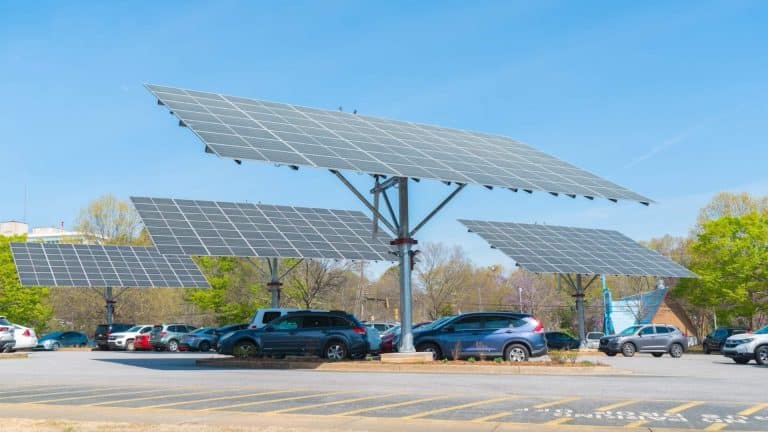The COVID-19 pandemic has led many of us to stay home – and thereby reduced both daily and vacation travel across the country. One result of this pattern has been that normally smoggy metropolitan areas are free from their typical transportation pollution haze. The dramatic reduction in transportation-related pollution we are witnessing, especially in urban areas, really drives home the magnitude of our collective vehicle pollution (pun intended); and this heightened awareness of the problem makes us better positioned to take action to combat it.
This post will explore the relationship between electric vehicles and fuel-economy (how many miles a vehicle travels per gallon of fuel) and greenhouse gas emissions (primarily CO2). Understanding this relationship is critical to fully understand how those two factors impact the bottom line – both financial and societal – costs of driving.
How Emissions Are Determined for Internal Combustion Engines
For a traditional internal combustion engine, or ICE, (a typical car) emissions are calculated by how much exhaust is given off by burning a gallon of gasoline. For the purposes of this analysis, we will focus on carbon dioxide (CO2) emissions, although there are other emissions associated with driving as well. The Environmental Protection Agency (EPA) and other agencies use the following average carbon content values to estimate CO2 emissions:

The average gasoline passenger vehicle on the road today gets 22.0 miles per gallon. Since every gallon burns 8,887 grams of CO2/gallon, every mile driven emits on average about 404 grams of CO2 – this equates (again, on average) to 4.6 metric tons per year (assuming 11,500 miles driven).
How Emissions Are Determined for Electric Vehicles
Since electric vehicles (EVs) have an electric motor instead of a combustion engine and tailpipe, no emissions are created by the act of driving an electric car. The emissions associated with EVs are generated “upstream,” where the electricity used to power an EV is produced. Thus, total emissions for EVs vary across the U.S. depending on how the electricity is generated in a given area. In New York, for instance, electricity is mostly generated by hydropower, meaning there are minimal CO2 emissions created in the generation of the electricity that powers EVs in that area.
This calculator, from the U.S. Department of Energy, shows emissions comparisons of EV to ICE vehicles by zip code for very local data comparison. Naturally, when the electricity that charges an EV comes from fossil fuels, the CO2 emissions associated with that EV will be higher. But, even in St. Louis, Missouri, where electricity is primarily generated by coal, driving electric is still one-third less polluting than driving on gasoline.
Furthermore, unlike traditional cars, EVs can be powered without fossil fuels entirely. When powered by renewable energy, like solar and wind, driving electric is virtually emission-free.
How Emissions Relate to Fuel Economy
Since EVs are not powered by gas, we can’t measure their fuel economies by calculating miles per gallon as we would for a traditional car. Instead, we use MPGe or miles per gallon equivalent. This mathematical formula equates the energy (in electricity kWh) equal to a gallon of gasoline. In the U.S. today, the average emissions from driving an EV are equivalent to driving a car that gets 88 miles per gallon. The average fuel economy for many new EVs is even higher – over 115 MPGe. In other words, a new EV can go over 115 miles using the same amount of energy contained in a gallon of gasoline.
In comparison, the average fuel economy for a new light-duty passenger car is 39.4 MPG and for light-duty trucks is 28.6. It’s worth noting that 60% of America’s passenger vehicles are SUVs and trucks. This trend toward trucks and SUVs increases the emissions pollution we are generating as a country.
What this means is that the more fuel-efficient EVs use less fuel to get from point A to point B than their gas counterparts. Less fuel burned translates directly to lower emissions.
The Nitty Gritty: Why EVs Are More Efficient
EVs are more efficient because of the technology that moves them. An electric motor is a vastly more efficient machine than a combustion engine allowing around 80% of energy from electricity to move the wheels. By contrast, only about 20% of energy from gasoline/diesel moves wheels in a traditional vehicle. Combustion literally means burning and most of the energy in gasoline is converted into heat energy during the combustion process.
The Bottom Line: Fuel Economy Standards and the Cost of Driving
EVs are the Clear Winner
A vehicle with lower efficiency standards uses more gas, which in turn generates more greenhouse gas pollutants AND costs more money to fuel. EVs use the least amount of energy to power, reduce CO2 emissions by at least 50 percent, and are the cheapest option on the market to fuel.
Supportive Policies are Critical to Maintain Momentum
Policies that increase fuel efficiency led to the development of these most energy-efficient vehicles. Unfortunately, the current administration just reset federal fuel economy standards by rolling back policy that was helping us achieve higher efficiency standards. According to separate reports, these changes will cost consumers $3,200 more per vehicle on fuel over the lifetime of ownership, or collectively, about $300 billion; and add nearly a billion additional metric tons of CO2 pollution into the atmosphere.
Learn more about driving electric at Electrify the South. Follow Driving on Sunshine for upcoming virtual EV ride and drive opportunities. Join our mailing list to stay connected with us when opportunities arise for taking action on EV policies.



